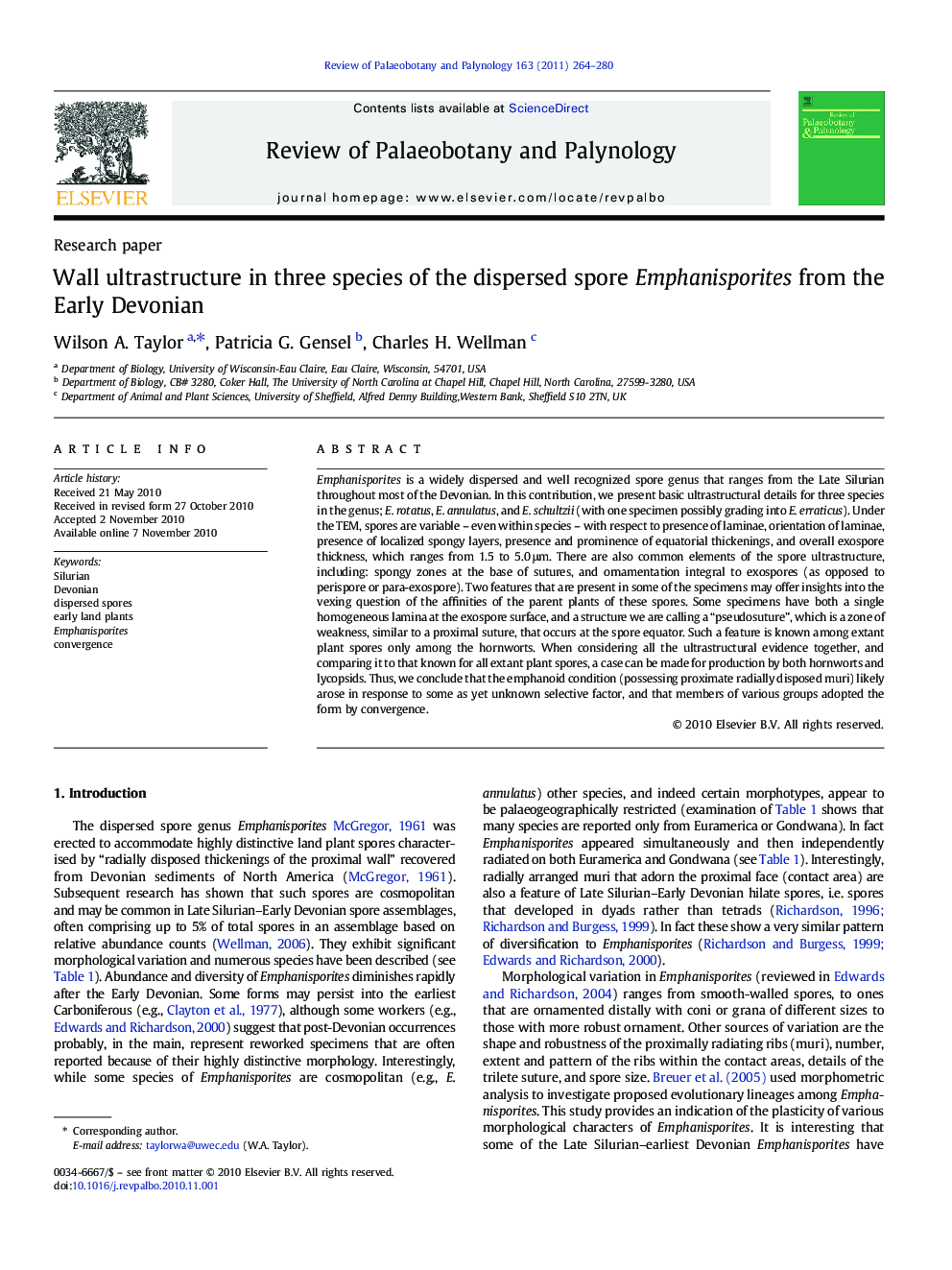| کد مقاله | کد نشریه | سال انتشار | مقاله انگلیسی | نسخه تمام متن |
|---|---|---|---|---|
| 4750640 | 1642538 | 2011 | 17 صفحه PDF | دانلود رایگان |

Emphanisporites is a widely dispersed and well recognized spore genus that ranges from the Late Silurian throughout most of the Devonian. In this contribution, we present basic ultrastructural details for three species in the genus; E. rotatus, E. annulatus, and E. schultzii (with one specimen possibly grading into E. erraticus). Under the TEM, spores are variable – even within species – with respect to presence of laminae, orientation of laminae, presence of localized spongy layers, presence and prominence of equatorial thickenings, and overall exospore thickness, which ranges from 1.5 to 5.0 μm. There are also common elements of the spore ultrastructure, including: spongy zones at the base of sutures, and ornamentation integral to exospores (as opposed to perispore or para-exospore). Two features that are present in some of the specimens may offer insights into the vexing question of the affinities of the parent plants of these spores. Some specimens have both a single homogeneous lamina at the exospore surface, and a structure we are calling a “pseudosuture”, which is a zone of weakness, similar to a proximal suture, that occurs at the spore equator. Such a feature is known among extant plant spores only among the hornworts. When considering all the ultrastructural evidence together, and comparing it to that known for all extant plant spores, a case can be made for production by both hornworts and lycopsids. Thus, we conclude that the emphanoid condition (possessing proximate radially disposed muri) likely arose in response to some as yet unknown selective factor, and that members of various groups adopted the form by convergence.
Journal: Review of Palaeobotany and Palynology - Volume 163, Issues 3–4, January 2011, Pages 264–280